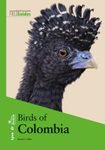By
Christopher
14 Aug 2019
Written for Flexibound
Having had no updated guides to Japan in recent years it is nice to have a sudden rush; the Helm Mark Brazil
Birds of Japan last year and now the new Lynx edition this year. The Lynx publication is available in both hardback and paperback which is a positive plus point over the Helm publication which was only available in paperback. The plates are printed on grey paper throughout and this gives the guide a more consistent organised feel over the Brazil guide (which had some blue pages and some white pages with the white egrets one white pages). I would also say the illustrations are more consistent and of better quality though with some reservations. I had expected this new guide to include more juvenile forms of the birds than the Brazil guide but it actually contains less. Some are also questionable – the juvenile sparrowhawks (apart from the Chinese sparrowhawk illustration) omit the white spots on the primaries which the Brazil guide shows. Having photographed juvenile Eurasian sparrowhawks with the white spots clearly visible this omission is puzzling. It seems that the artist has relied on previous Japanese guides which show this form. The tit section is, if anything, less comprehensive than the Brazil guide and a real disappointment. However, the guide is cleaner and clearer – the geographical essay is much shorter and the whole introduction more focused and less padded. It is nice that the author has not yielded to the temptation to indulge in speculation about what species may be seen in the future.
Range maps are also more conservative than the Brazil guide and for some species differ. The guide itself differs from the normal Clements/IOC taxa with species arranged differently. However, if the user can live with the HBW and Birdlife International classification it is a much easier guide to use. It is better laid out and the illustrations apart from the reservations much clearer and easier to use. One of the issue's with the Helm guide was the difficulty of using it as a field guide and the over-cluttered pages. Another great addition is the inclusion of Japanese bird names. This was a very disappointing omission by the Brazil guide but here we have each Japanese name in katakana and a katakana index as well. Another very welcome feature is the inclusion of bar codes which link to the HBW website and the photo sections of the birds described. The reader just points their smartphone at the code and things happen automatically. There is also an ID code included on an insert card so that the user can upload their photos and records. Once again a nice feature. This feature works very well and is a positive boon for identification purposes. Some birds only have a few photos but most have a lot. It certainly brings the guide into the 21st century and generally creates an impression that the publishers and author have taken more care over the book.
So if I were to suggest which guide to use I would recommend this one. It is easier to use and with the link to the online photo library far and above a better investment. Of course, it isn't perfect but I don't believe there ever will be a perfect guide. However, it is a clear improvement on all previous guides and worth the purchase.
























![Ageing & Sexing of Migratory East Asian Passerines [English / Chinese]](http://mediacdn.nhbs.com/jackets/jackets_resizer_medium/25/250760.jpg?height=150&width=115)


















